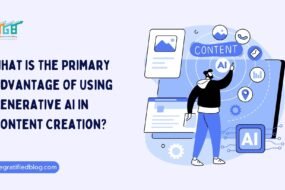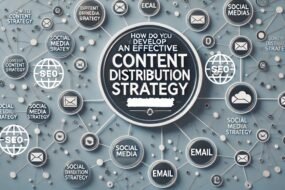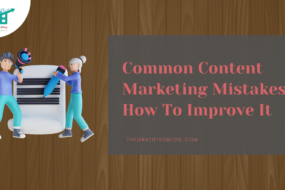
In the expansive realm of the internet, where words and ideas flow endlessly, one thing often stands between captivating content and its audience: design. When we say “explain how design is important to the content,” we’re not just talking about making things look pretty. We’re discussing the essence of how your message is conveyed, how your audience connects with it, and whether your content makes a lasting impression. Think of design as the artist’s brush that paints life into the canvas of your words. This blog will delve into how design is essential to the content. So, fasten your seatbelts as we journey into the world where aesthetics meet substance.

So, let’s get started;
The Visual Appeal
First Impressions And Brand Identity Matters
First Impression Matter
When it comes to creating content, how it looks can have an immediate and profound impact on your audience. Visual design is like the fancy wrapping paper on a gift – it entices people to unwrap and discover what’s inside. Here’s how it works and why it matters:
- Immediate Impact of Visual Design
First Impressions Matter: You know that saying, “You never get a second chance to make a first impression”? Well, it applies perfectly to content. Upon clicking your website or opening your article, they first notice how it looks. Is it clean and organized, or is it a jumble of text? Is it visually appealing, or does it look outdated? These initial visual cues can shape how your audience perceives your content and brand.
- Examples of Well-Designed Content
- Apple’s Website: Apple is known for its sleek and minimalist design. When you visit their website, you’re greeted with stunning product images, crisp typography, and a simple layout. This design reinforces their brand image of elegance and innovation.
- National Geographic’s Photography: National Geographic’s website showcases breathtaking photography. The visuals draw you in, making you want to explore their stories and articles.
- Statistics on Visuals and Audience Engagement
Here’s the kicker: Visuals don’t just create an excellent first impression; they also play a crucial role in retaining your audience’s attention.
- Visual Content Gets More Shares: Research indicates that social media posts containing images or videos are shared more than text-only posts. This sharing helps your content reach a broader audience.
- Higher Engagement on Visual Platforms: Platforms like Instagram and Pinterest, heavily focused on visuals, have high user engagement rates. People spend more time on these platforms because they find the content visually appealing.
- Eye-Tracking Studies: Eye-tracking research reveals that when people land on a webpage, their eyes are naturally drawn to images and headlines first. If these elements are compelling, users are more likely to continue reading.
Building Brand Identity
Imagine you’re walking down a busy street and spot a glimpse of the iconic golden arches. Immediately, you know you’re passing a McDonald’s. This is the power of consistent design in building brand identity. When a brand uses the same colors, logos, fonts, and visual elements across all its materials, it becomes instantly recognizable.
Consistency breeds familiarity, and familiarity builds trust. When consumers consistently see a brand’s visual elements, they associate them with its values and promises. It’s like meeting an old friend in a crowd – you recognize them instantly and know what to expect.
- Few Successful Brand Identity Through Design
- Coca-Cola: The timeless red color, iconic Spencerian script logo, and curvy bottle shape have remained consistent for over a century. When you see these design elements, you don’t just think of a soft drink; you think of happiness and refreshment, all thanks to their unwavering brand identity.
- Nike: The swoosh symbolizes victory and athleticism. Nike’s consistent use of this logo and their “Just Do It” slogan has made them synonymous with sports and fitness. Their brand identity has enabled them to connect with athletes and sports enthusiasts worldwide.
Readability And Accessibility
Typography And Color Psychology Matters
- Significance of Font Selection and Readability
Font selection might seem like a small detail in content creation, but it can make a difference. Imagine trying to read a novel with tiny, cramped letters or one where every page uses a different, hard-to-read font. It would be frustrating. The same goes for any content, whether a blog post, a website, or a restaurant menu.
The font you select establishes the mood for your content. A clean, easy-to-read font makes your content more accessible and enjoyable. It ensures that your readers can effortlessly absorb the information you’re sharing. On the other hand, poor font choice can distract and frustrate your audience, making them less likely to engage with your content.
- Tips for Choosing the Right Fonts
Here are some practical tips for picking the right fonts for different types of content:
- Know Your Audience: Consider the preferences and expectations of your target audience. Are they looking for a formal, professional tone or something more casual and friendly?
- Content Type Matters: Different types of content may call for different fonts. For example, a legal document might use a classic serif font for a professional appearance, while a children’s book may opt for a playful, sans-serif font for readability.
- Readability is Key: Prioritize readability above all else. Ensure that the font is legible in various sizes and on different devices.
- Maintain Consistency: Stick to a small selection of fonts across your content and brand materials. Consistency helps build brand recognition.
Color Psychology
- Emotional Impact of Colors in Content Design
Colors are like the emotional architects of your content. They have the incredible power to evoke feelings, create moods, and influence perceptions. Here’s a glimpse into how different colors can make your content feel:
- Red: Red is the color of passion and energy. It can grab attention and convey a sense of urgency or excitement. Think about how many sale signs or “buy now” buttons are in red.
- Blue: Blue exudes calmness, trust, and professionalism. Numerous technology firms incorporate the color blue into their logos and designs to create a sense of reliability.
- Green: Green is often associated with nature and tranquility. It can represent growth, health, and eco-friendliness, making it a favorite for organic and sustainable brands.
- Yellow: Yellow radiates positivity and happiness. It can uplift the mood and is often used in content to draw attention and convey optimism.
- Black: Black signifies sophistication and luxury. High-end brands frequently use it to create an aura of exclusivity.
- Examples of Color Schemes
Here are a few color combinations and the emotions they can evoke:
- Blue and White: This classic combo represents purity and trust. It’s commonly seen in healthcare and tech industries.
- Red and Yellow: A combination that screams excitement and energy. Fast-food chains often use these colors to stimulate appetite.
- Green and Brown: A natural pairing that invokes feelings of the outdoors and eco-friendliness. You’ll find it in environmental organizations and outdoor brands.
User Experience (UX)

Navigation, Layout, And Mobile Responsiveness
- Importance of Intuitive Navigation and Layout
Think of your content like a treasure hunt. Intuitive navigation and layout are the maps and signposts that guide your users on this journey. When your website or app is easy to navigate and well-organized, users can find what they need quickly and effortlessly. Here’s why it matters:
- User Satisfaction: People enjoy getting lost and needing clarification. Intuitive navigation and layout make users feel more comfortable and satisfied with their experience.
- Reduced Bounce Rates: When users need help finding what they’re looking for, they’re more likely to bounce off your site and never return. Good navigation keeps them engaged.
- Tips for Optimizing Content Layout
- Clear Hierarchy: Organize your content with a clear hierarchy. Important information should be prominent, while less crucial details can take a backseat.
- Consistent Design: Use elements like menus, buttons, and headers across your site or app. Familiarity helps users navigate.
- User Testing: Have real users test your navigation and layout. Their feedback can reveal pain points you might have missed.
- Examples of UX Excellence
- Airbnb: Airbnb’s website and app are renowned for their user-friendly design. They simplify finding and booking accommodations worldwide with intuitive search filters and a straightforward layout.
- Google Maps: Google Maps offers an exceptional UX with easy-to-follow directions, clear markers, and real-time traffic information. It’s a prime example of how navigation can be made seamless.
Mobile Responsiveness
Imagine if your website or app was only accessible from a desktop computer. In today’s mobile-dominated world, that would be a significant limitation. Mobile-friendly design is crucial because:
- Mobile Users are Everywhere: More people access the internet on mobile devices than desktops. Overlooking mobile users equates to losing a significant opportunity for a massive audience.
- Google’s Mobile-First Indexing: Google prioritizes mobile-friendly websites in search results. If your site isn’t mobile-friendly, it may rank lower and be more challenging for users to find.
- Tools and Techniques for Mobile Compatibility
- Responsive Web Design: Use frameworks like Bootstrap or CSS Grid to create layouts that automatically adjust to different screen sizes.
- Mobile-First Approach: Start designing for mobile and then scale up for larger screens. This ensures a seamless experience for mobile users.
- Testing Tools: Tools like Google’s Mobile-Friendly Test can help you identify and fix mobile compatibility issues on your website.
Visual Storytelling
Infographics, Data Visualization, Imagery And Illustrations
Infographics and data visualization are like the artists of the content world. They turn complex information into something visually appealing and easy to understand. Here’s how they work their magic:
- Simplification: Infographics break down complex data and concepts into bite-sized, digestible chunks. They use visuals like charts, graphs, and icons to make information more accessible.
- Engagement: Visuals grab attention. Infographics and data visualizations will likely attract readers and keep them engaged with your content.
- Examples of Compelling Visual Storytelling through Data
- COVID-19 Data: During the pandemic, data visualizations played a crucial role in helping people understand infection rates, vaccination progress, and safety measures. Charts and maps made this complex data accessible to the public.
- Election Results: News organizations often use interactive maps and graphs to showcase election results. These visuals make it easy for viewers to see which states voted for which candidate.
- Resources for Creating Effective Infographics
- Canva: Canva offers user-friendly templates and design tools for creating infographics.
- Piktochart: Piktochart is another online platform specializing in infographic creation.
Imagery And Illustrations
Images and illustrations are the storytellers of the visual world. They add depth, emotion, and context to your content. Here’s how they do it:
- Simplification: Images simplify complex ideas. Instead of reading a thousand words, a single image can convey the same message more quickly and effectively.
- Emotional Connection: Pictures have the power to evoke emotions. A well-chosen image can make your readers feel joy, empathy, or curiosity, enhancing their connection to your content.
- How Visuals Simplify Complex Concepts?
Consider explaining how a car engine works. You could write pages of text, but a simple diagram showing the engine’s components and their interactions conveys the idea in seconds. That’s the magic of visual simplification.
- Tips for Selecting and Using Images Effectively
- Relevance: Choose images that directly relate to your content. Irrelevant visuals can confuse readers.
- Quality: Use high-resolution images to maintain a professional appearance. Blurry or pixelated images can undermine your content’s credibility.
- Consistency: Maintain a consistent visual style throughout your content to reinforce your brand identity.
SEO And Design Integration
Optimizing Images For SEO And Ensuring Mobile Friendliness
Optimizing images for SEO isn’t just about making them look good; it’s about making them work for your website’s visibility in search engines. Here’s why it’s essential:
- Improved Page Loading: Well-optimized images load faster, which enhances the overall user experience. Search engines favor faster-loading pages.
- Enhanced User Engagement: High-quality images capture users’ interest and retain them on your page for extended periods, diminishing bounce rates. Search engines notice when users stay on your site.
- Techniques for Improving Image SEO
- File Names: Use descriptive file names that include relevant keywords. For example, “red-apple.jpg” is better than “IMG12345.jpg.”
- Alt Text: Add meaningful alt text to your images. Alt text provides context for search engines and assists visually impaired users.
- Image Compression: Condense images to minimize file sizes without compromising quality. Smaller files load faster and improve SEO.
Mobile-Friendly SEO
Responsive design is like giving your website a superhero costume that can adapt to any device, including mobile phones. Here’s why it’s crucial for SEO:
- Better User Experience: Responsive design ensures your site looks and functions well on mobile devices. When users have a positive experience, they’re more likely to stay on your site, which search engines reward.
- Google’s Mobile-First Indexing: Google mainly relies on the mobile version of a site for indexing and ranking. If your site isn’t mobile-friendly, it might not rank as well in search results.
- Importance of Mobile SEO
Mobile SEO is a big deal because:
- Mobile Traffic: More people browse the internet on mobile devices than desktops. Ignoring mobile SEO means missing out on a significant portion of your audience.
- Local Searches: Many mobile searches are for local businesses or services. Optimizing for mobile can help you capture local customers.
Conclusion
Now that we have explained how design is essential to the content”, why make your content less attractive? Use these points today and see what results your content can drive for your business.
If you have any questions regarding this topic, then feel free to leave your questions in the comments section. We will be happy to answer you.
Thanks for reading 🙂








No Comments